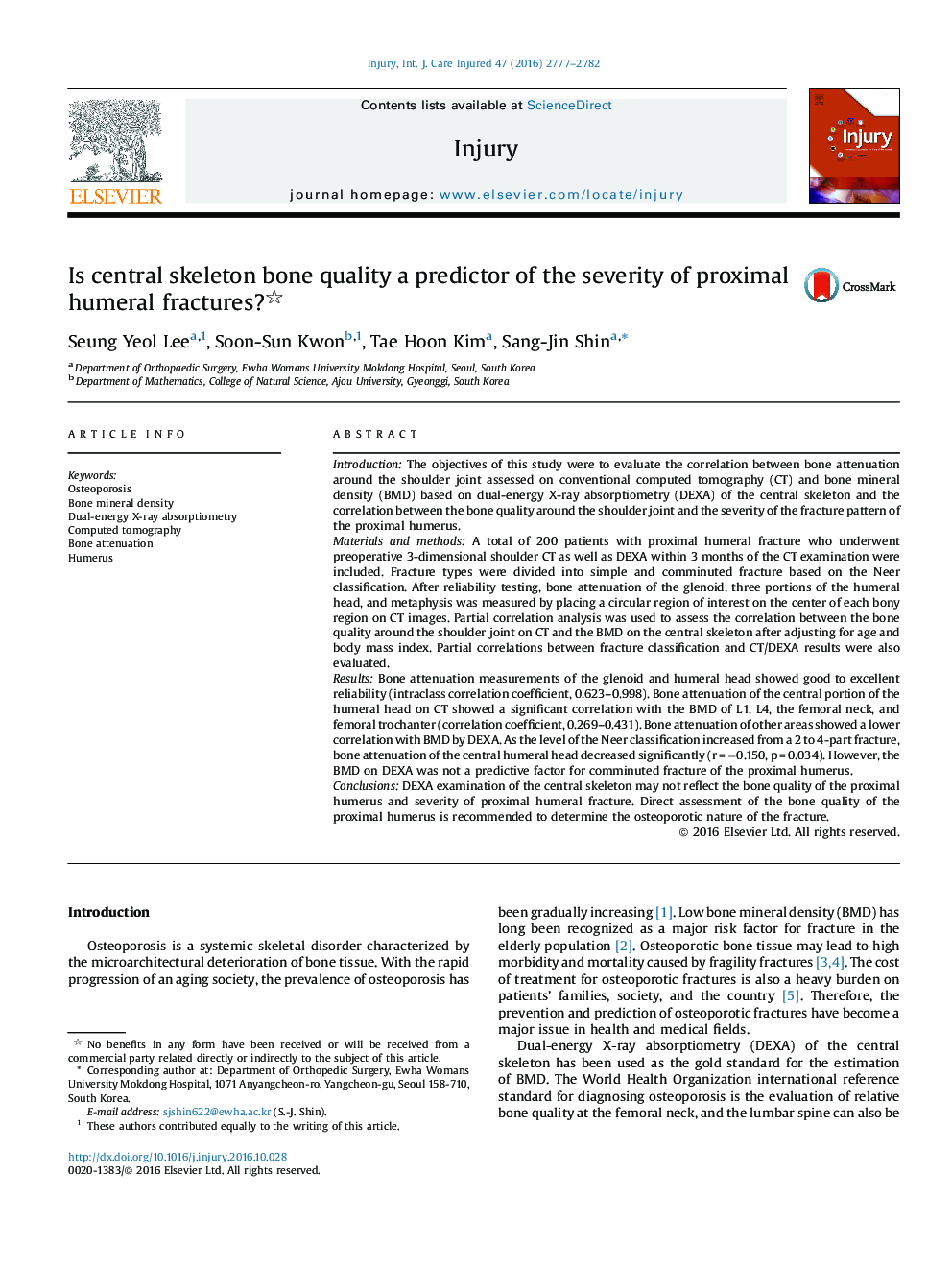| کد مقاله | کد نشریه | سال انتشار | مقاله انگلیسی | نسخه تمام متن |
|---|---|---|---|---|
| 5652750 | 1407225 | 2016 | 6 صفحه PDF | دانلود رایگان |
IntroductionThe objectives of this study were to evaluate the correlation between bone attenuation around the shoulder joint assessed on conventional computed tomography (CT) and bone mineral density (BMD) based on dual-energy X-ray absorptiometry (DEXA) of the central skeleton and the correlation between the bone quality around the shoulder joint and the severity of the fracture pattern of the proximal humerus.Materials and methodsA total of 200 patients with proximal humeral fracture who underwent preoperative 3-dimensional shoulder CT as well as DEXA within 3 months of the CT examination were included. Fracture types were divided into simple and comminuted fracture based on the Neer classification. After reliability testing, bone attenuation of the glenoid, three portions of the humeral head, and metaphysis was measured by placing a circular region of interest on the center of each bony region on CT images. Partial correlation analysis was used to assess the correlation between the bone quality around the shoulder joint on CT and the BMD on the central skeleton after adjusting for age and body mass index. Partial correlations between fracture classification and CT/DEXA results were also evaluated.ResultsBone attenuation measurements of the glenoid and humeral head showed good to excellent reliability (intraclass correlation coefficient, 0.623-0.998). Bone attenuation of the central portion of the humeral head on CT showed a significant correlation with the BMD of L1, L4, the femoral neck, and femoral trochanter (correlation coefficient, 0.269-0.431). Bone attenuation of other areas showed a lower correlation with BMD by DEXA. As the level of the Neer classification increased from a 2 to 4-part fracture, bone attenuation of the central humeral head decreased significantly (r = â0.150, p = 0.034). However, the BMD on DEXA was not a predictive factor for comminuted fracture of the proximal humerus.ConclusionsDEXA examination of the central skeleton may not reflect the bone quality of the proximal humerus and severity of proximal humeral fracture. Direct assessment of the bone quality of the proximal humerus is recommended to determine the osteoporotic nature of the fracture.
Journal: Injury - Volume 47, Issue 12, December 2016, Pages 2777-2782
